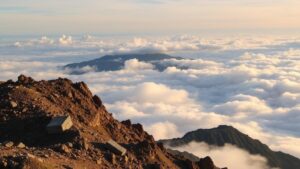Investigating the naturally pink waters of Lake Hillier in Australia.
Investigating the Naturally Pink Waters of Lake Hillier in Australia
Located on Middle Island, which is part of the Recherche Archipelago in Western Australia, Lake Hillier is renowned for its strikingly vivid pink color. This unique body of water has drawn the attention of scientists, travelers, and nature enthusiasts alike due to its unusual hue and ecological significance.
The Characteristics of Lake Hillier
Lake Hillier stretches approximately 600 meters (1,969 feet) in length and is surrounded by dense forestation of eucalyptus and a narrow rim of sand. The most captivating feature of the lake is its vibrant pink color, which provides a stark contrast against the surrounding green landscape and the azure waters of the Southern Ocean.
Causes of the Pink Coloration
The distinctive pink color of Lake Hillier is primarily attributed to the presence of certain microorganisms, particularly halophilic (salt-loving) bacteria and algae. e organisms thrive in high-salinity environments and produce carotenoids, pigments that give the lake its unique hue. Studies suggest that the combination of high salinity, a lack of fresh water inflows, and specific climatic conditions contribute to the ideal setting for these microorganisms to flourish.
Historical Background
Lake Hillier was first documented in 1802 by the British navigator Matthew Flinders, who described it as a small lake of a most extraordinary pink color. The lake’s unusual appearance has captured curiosity ever since, leading to studies focused on its water chemistry and biology. Despite increased interest and various scientific investigations, the precise reasons for its pink coloration remain partially understood, making it an ongoing subject of research.
Scientific Significance
Lake Hillier serves as an important natural laboratory for researchers studying extremophiles, organisms that live in extreme conditions. e extremophiles provide insights into biochemistry and potential applications in biotechnology, possibly influencing areas such as pharmaceuticals, agriculture, and even space exploration where survival in harsh environments is critical.
Tourism and Accessibility
While Lake Hillier is not easily accessible due to its remote location, it has become a popular attraction for adventurous travelers. Visitors typically experience the lake by helicopter or small aircraft, providing breathtaking aerial views of the pink water surrounded by lush greenery. Guided tours emphasize the ecological importance of the lake and promote responsible tourism to minimize environmental impact.
Environmental Concerns
As with many natural wonders, environmental concerns arise regarding the preservation of Lake Hillier. Issues such as climate change, pollution, and unsustainable tourism practices pose threats to this delicate ecosystem. Conservation efforts are essential to maintaining the lake’s unique environment to ensure that future generations can appreciate its extraordinary beauty.
Real-world Applications and Takeaways
The uniqueness of Lake Hillier goes beyond its aesthetic appeal; it acts as a visual reminder of the complexities of ecosystems and environmental interplay. Those interested in studying similar ecological phenomena or exploring nature should consider the following:
- Participating in responsible tourism practices to protect unique natural environments.
- Supporting conservation initiatives that aim to preserve sensitive ecosystems.
- Encouraging scientific research to understand the dynamics of extremophiles and their potential applications.
To wrap up, Lake Hillier stands as an extraordinary natural phenomenon, rich in scientific intrigue and beauty. Understanding its ecological significance not only deepens our appreciation for such wonders but also reinforces the need for their protection in an ever-evolving world.



